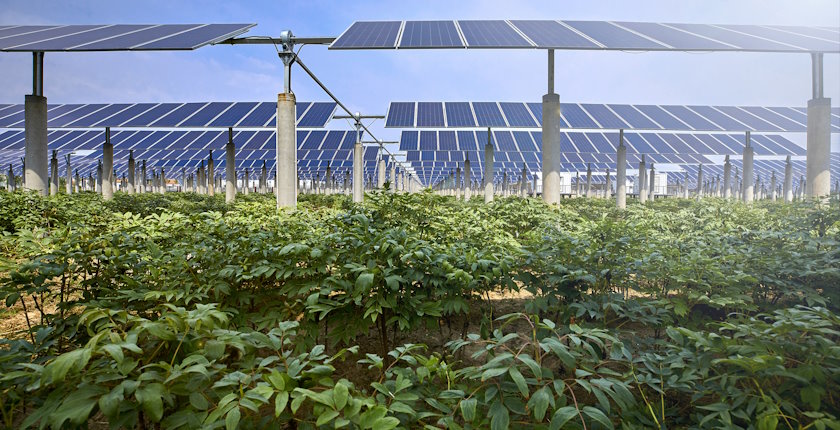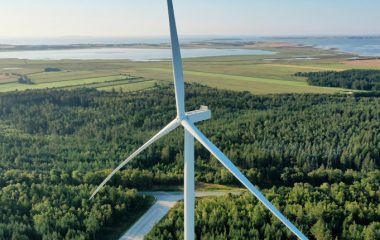
Photo: iStock
Using a minuscule part of agricultural land to simultaneously generate solar power would greatly contribute to the European Union’s 2030 renewable energy goals, the European Commission’s Joint Research Centre found in its agrivoltaics study.
Combining agriculture and photovoltaics into so-called agrisolar or agrivoltaics on just 1% of utilized agricultural area in the EU could bring 944 GW of peak capacity online. The figures are from the Overview of the Potential and Challenges for Agri-Photovoltaics in the European Union, issued by the European Commission’s Joint Research Centre or JRC. It reached the result by assuming 600 kW would fit on every hectare, as a middle scenario.
With ground-mounted systems on the same surface, the capacity would land at 1.8 GW. In comparison, the EU aims to reach 720 GW in solar power by 2030 in peak or direct current terms. At the end of 2022, the installed capacity was 211 GW in the same category.
Solar panels produce direct current, which is converted to alternating current to be used directly or injected into the electric network. Grid connection points usually have a capacity that is 20% or so lower than the nameplate measure.
According to Eurostat, the utilized agricultural area is 158 million hectares. There are 98 million hectares of arable land, 49 million hectares of permanent grassland and meadow, 10 million hectares of permanent crops and 290,000 hectares of market gardens.
Focus on food security, public acceptance
The study also maps the current situation in relation to the definition of agriphotovoltaics – agri-PV, as the concept is also called, and to related standards and guidelines. It draws attention to the challenges faced by developers.
Although considerable capacity can be installed on roofs, in urban areas, on brownfield sites and on infrastructure, approximately 50% in the EU are expected to be ground-mounted systems in agricultural areas, the authors pointed out. Existing utility-scale ground-mounted PV systems (92 GW) span 100,000 hectares, they said.
“Nonetheless, a future significant expansion of PV must respect food security requirements, as well as taking into account public acceptance issues with regard to the landscape and environmental impact. Agri-PV offers a compromise solution, albeit with an economic cost,” JRC stressed.
Agrivoltaics are more than just letting sheep graze between ground-mounted panels
Unlike the conventional, ground-mounted photovoltaic systems, in agrivoltaic applications the panels are placed higher, on support structures. It allows crops, grass or fruit to grow and provides access to agricultural machinery and livestock.
The approach is becoming more and more popular as it implies simultaneous agricultural activities and the production of electricity.
It is envisaged to provide a middle ground in the tradeoff between energy security and food security. While generally recognized as one of the cleanest sources, there are ethical and economic issues with solar power to be resolved when it comes to ground-mounted panels. Critics point to cases where habitats are jeopardized and they oppose occupying arable land.
But instead of mounting panels overhead, agrisolar projects often just come down to letting cattle graze between arrays placed on the ground, which lowers maintenance costs anyway.
No official definition yet
The lack of a clear and EU-harmonised definition of agrivoltaics presents a significant obstacle, as the installation of such systems may lead to changes in land characterization, which could affect eligibility for agricultural subsidies and for taxation, according to JRC. The document lists more challenges: maximizing electricity production without affecting crop yield, while ensuring biodiversity preservation and nature restoration, complex permitting and grid connection procedures, and land price increases that could jeopardize the welfare and security of farmers.
The recommendations include integrating agrivoltaics in tenders for renewable energy incentives. Engaging rural communities in the planning and decision-making process is essential, the study adds.









Be the first one to comment on this article.